|
National Park Service
Confinement and Ethnicity An Overview of World War II Japanese American Relocation Sites |

|
Chapter 1
Sites of Shame: An Introduction
In 1942, almost 120,000 Japanese Americans were forced from their homes in California, western Oregon and Washington, and southern Arizona in the single largest forced relocation in U.S. history. Many would spend the next 3 years in one of ten "relocation centers" across the country run by the newly-formed War Relocation Authority (WRA). Others would be held in facilities run by the Department of Justice and the U.S. Army (Figure 1.1). Since all Japanese Americans on the west coast were affected, including the elderly, women, and children, Federal officials attempted to conduct the massive incarceration in a humane manner (Figure 1.2). However, by the time the last internees were released in 1946, the Japanese Americans had lost homes and businesses estimated to be worth, in 1999 values, 4 to 5 billion dollars. Deleterious effects on Japanese American individuals, their families, and their communities, were immeasurable.

Figure 1.1. Sites in the western U.S. associated
with the
relocation of Japanese Americans during World War
II.
(click image for larger size)
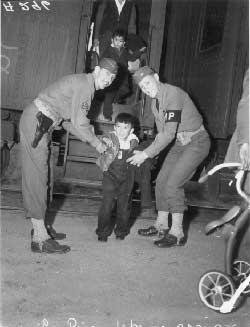 Figure 1.2. In this obviously posed government photograph armed military police lend a helping hand, Manzanar 1942. (National Archives photograph) |
During World War II the relocation was justified as a "military necessity." However, some 40 years later, the United States government conceded that the relocation was based on racial bias rather than on any true threat to national security. President Ronald Reagan signed the Civil Liberties Act of 1988 which provided redress for Japanese Americans. The following year President George Bush issued a formal apology from the U.S. government. Many histories describe the political, economic, legal, and social aspects of the relocation (see, for example CWRIC 1982, Daniels 1989; Daniels et al. 1991; Irons 1983, 1989; Spicer et al. 1969.). This report, in contrast, provides an overview of the physical remains left at the sites of the Japanese American relocation. The main focus is on the architectural remnants, the archeological features, and the artifacts remaining at the relocation centers themselves, although other sites where Japanese americans were held during World War II are also considered.
One of the relocation centers, Manzanar, was designated a National Historic Site in 1992 to "provide for the protection and interpretation of historic, cultural, and natural resources associated with the relocation of Japanese Americans during World War II" (Public Law 102-248). But there are nine other relocation centers, and numerous other facilities associated with the relocation and internment. Most of the Japanese Americans were first sent to one of 17 temporary "Assembly Centers," where they awaited shipment to a more permanent relocation center. Most of those relocated were American citizens by birth. Many were long-term U.S. residents, but not citizens, because of discriminatory naturalization laws. Thousands of these "aliens" were interned in Department of Justice and U.S. Army facilities.
This report describes what is left at places where Japanese Americans were incarcerated during World War II, to the extent possible given the many facilities associated with the relocation. The present work is part of the National Landmark Theme Study called for in the Manzanar National Historic Site enabling legislation, to "...identify, evaluate, and nominate as national historic landmarks those sites, buildings, and structures that best illustrate or commemorate the period in American history from 1941 to 1946 when Japanese Americans were ordered to be detained, relocated, or excluded pursuant to Executive Order Number 9066, and other actions" (Public Law 102-248, March 3, 1992).
Methods included both archival research and field inspections, as well as informal interviews with former evacuees. Many primary sources were consulted, such as the relocation center newspapers (available on microfilm), blueprints and photographs from the National Archives, and materials in special collections at university libraries. Information was also solicited from federal land-managing agencies where sites associated with the relocation were located (the Bureau of Reclamation, the Bureau of Land Management, and the Forest Service), from State Historic Preservation Offices, and from the California Historic Resources Information System centers. USGS topographic maps, relevant archaeological reports, and National Register of Historic Places nominations were also consulted. Secondary sources used include a wealth of published books, articles, agency reports, and unpublished manuscripts.
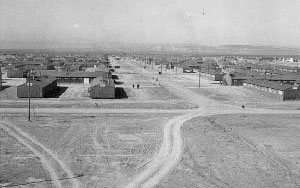 Figure 1.3. Topaz Relocation Center in 1943. (National Archives photograph)  Figure 1.4. Site of the Topaz Relocation Center today. |
Field work included visits to all of the facilities run by the WCCA (Wartime Civilian Control Agency) and the WRA (War Relocation Authority) associated with the relocation, including relocation centers, isolation centers, and assembly centers. Many of the other sites where Japanese Americans were held that were run by the Department of Justice and the U.S. Army were visited as well. The current landscape was compared with old maps, blueprints, and photographs, to discover which of the existing features were present during the Japanese American internment (Figures 1.3 and 1.4).
The primary documentation for this project consists mostly of photographs, both color and black and white. Maps were prepared for features where access and time allowed. Former evacuees and local residents often provided useful information, and many times accompanied us in the field to point out and explain different features. Additional information was obtained from local museums and historical societies; many of these institutions have photographs, artifacts, documents, and even structures from the relocation centers. Chambers of Commerce and visitor information centers near the sites also provided tips on local resources.
The degree of preservation at the sites visited varied tremendously. At some, modern development has obscured most traces of the World War II-era buildings and features. Other sites have been protected by their isolation, or their location on undeveloped private or tribal lands. At a few sites relocation center buildings still stand, some abandoned and decrepit, but some still in use. Table 1.1 gives a general summary of the features remaining at each relocation center site; Table 1.2 lists the standing buildings and major structures present. Table 1.3 provides general information about the presence of features at each Assembly Center. Other facilities are considered in Table 1.4.
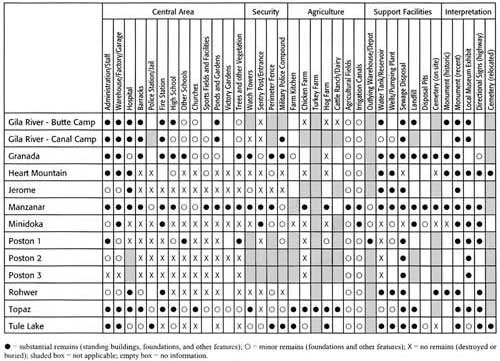
Table 1.1. Summary of Relocation Center Features.
(click image for larger size)
|
Table 1.2. Standing Buildings and Major Structures at Relocation Centers.
| |
|
Gila River - Butte
Honor Roll Monument Sewage Treatment Plant Gila River - Canal
Sewage Treatment Plant Granada
Cemetery Monument Outlying Farm Buildings (pre-WRA construction, most still in use) Co-op Store Storage Room Water Tank Heart Mountain
Honor Roll Monument Hospital Boiler Room Hospital Mess Hospital Warehouse Reservoir Root Cellar High School Storage Room Staff Apartment Jerome
Hospital Smokestack Sewage Treatment Plant Water Tank Manzanar
Auditorium (still in use) Cemetary Monument MP Police and Internal Sentry Posts Reservoir Sewage Treatment Plant |
Minidoka
Irrigation Canal Drops (numerous still in use) Root Cellar Sentry Post and Waiting Room at Entrance Poston I
Auditorium and Classrooms Garage/Shop (still in use) Sewage Treatment Plant Poston II
Sewage Treatment Plant Hospital Building (relocated, still in use) Poston III
Sewage Treatment Plant Rohwer
Cemetary Monuments, Headstones, and landscaping Hospital Smokestack Sewage Treatment Plant Water Tank Topaz
Outlying Farm Buildings (most are pre-WRA construction, some are still in use) Tule Lake
Farm Kitchen Stockade Jail Military Police, Administration and Staff Buildings (numerous still in use) Sewage Treatment Plants (2) Warehouses (several still in use) |
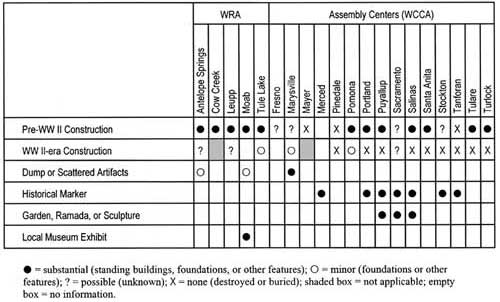
Table 1.3. Summary of Features at Other WRA Facilities and Assembly Centers.
(click image for larger size)
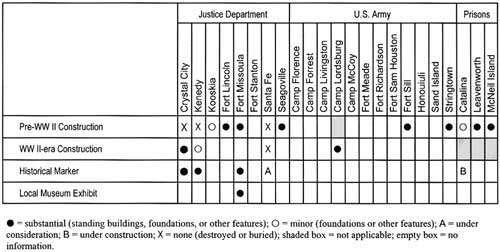
Table 1.4. Summary of Features at Justice Department, U.S. Army, and
Prison Facilities.
(click image for larger size)
Current Interpretation and Recognition
|
Table 1.5. Sites Associated with the Relocation
of Japanese Americans During World War II Listed on the National
Register of Historic Places.
| ||
| Site | Date Listed | |
| Ft. Missoula Internment Center | April 29, 1987 | |
| Granada Relocation Center | May 18, 1994 | |
| Heart Mtn. Relocation Center | December 19, 1985 | |
| Manzanar Relocation Center | July 30, 1976 | |
| Minidoka Relocation Center | July 10, 1979 | |
| Moab Isolation Center | May 2, 1994 | |
| Rohwer Relocation Center | July 30, 1974 | |
| Topaz Reloation Center | January 2, 1974 | |
Six of the relocation centers and two other facilities (the Moab Isolation Center and the Fort Missoula Internment Camp) are listed on the National Register of Historic Places for their association with events that have made a significant contribution to the broad patterns of U.S. history (Criterion A) (Table 1.5). For Moab and Fort Missoula the relocation was only part of the significant historic association cited in their nominations. Although the relocation centers did not meet the minimum of 50 years age requirement at the time of listing, they were deemed to be of exceptional importance (Criterion G). The Manzanar Relocation Center and the memorial cemetery at the Rohwer Relocation Center also have National Historic Landmark status. All of the assembly centers in California are state historic landmarks.
All ten of the relocation centers have historical markers. These range from a single plaque at some of the sites to memorial parks at Heart Mountain and Rohwer.
At the Gila River Relocation Center there is a historical plaque at the site of Canal Camp and a historical plaque and memorial plaque at Butte Camp. However, access to the sites, which are on tribal land, is restricted. There are exhibits about the relocation center at the nearby tribal cultural center.
The Granada Relocation Center, also called Amache, has a recent memorial monument at the relocation cemetery. An interpretive drive and walk are planned. The site is now owned by the nearby town of Granada.
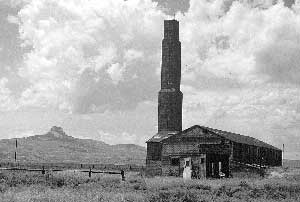 Figure 1.5. Hospital heating plant at the Heart Mountain Relocation Center. |
In the former administration area at the Heart Mountain Relocation Center there is a small memorial park which includes several plaques and the foundation of a mess hall chimney. To the north three buildings remaining from the relocation center hospital complex are still intact and may someday be used to house exhibits (Figure 1.5).
The central portion of the Jerome Relocation Center is owned by a single family who farms the land. There is a large historical marker along the highway at the site, placed with the landowners' permission.
Manzanar has a state of California historical marker, a National Landmark plaque, and a Blue Star Memorial Highway marker at the original relocation center entrance. The site is now administered by the National Park Service, which plans to rehabilitate the relocation center auditorium on site for use as an interpretative center. Other plans call for a loop tour road, outdoor interpretative displays, and a reconstructed barracks and watch tower.
 Figure 1.6. Elementary school auditorium at the Poston Relocation Center. |
At the entrance to the Minidoka Relocation Center there are several plaques. A museum at the nearby town of Jerome has an interpretive exhibit and plans are underway for a more extensive exhibit in a former barracks at a different museum location.
Along the highway at the site of the Poston Relocation Center there is a large memorial monument and an information kiosk with interpretative displays. Just northwest of the monument there is an adobe-walled auditorium and other buildings left from the relocation center. The auditorium building, built by the Japanese American residents, is in disrepair, but in general retains substantial architectural integrity and is relatively accessible, suggesting it could make an excellent interpretative center (Figure 1.6).
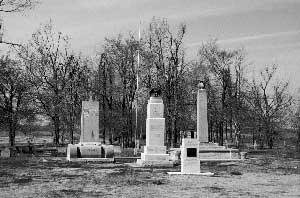 Figure 1.7. Memorial park at the Rohwer Relocation Center. |
At the Rohwer Relocation Center cemetery is a recent historic monument and a National Landmark plaque. The cemetery also includes two large monuments built during the relocation, as well as numerous graves (Figure 1.7).
At the Topaz Relocation Center there is a parking area and a large historical monument. In the nearby town of Delta there is another monument with directional information, and the local museum has brought in and rehabilitated a barracks, which it uses to display artifacts and information about the relocation center.
At the Tule Lake Relocation center there is an ornate rock and concrete pedestal and wall built to display a state of California historical marker. Numerous buildings from the relocation center remain at the site, including the infamous stockade jail, located just north of the historical marker.
Two other facilities used by the WRA are interpreted for the public. Use of the Dalton Springs CCC Camp as an isolation center is mentioned in a museum exhibit in the nearby town of Moab. The temporary use of the Cow Creek CCC Camp at Death Valley National Park is the subject of interpretive talks and a booklet sold at the Park visitor center.
Seven of the WCCA assembly centers have commemorative markers on site. One also has a fenced memorial garden (Salinas), one has a ramada (Figure 1.8; Sacramento), and one has a sculpture (Puyallup).
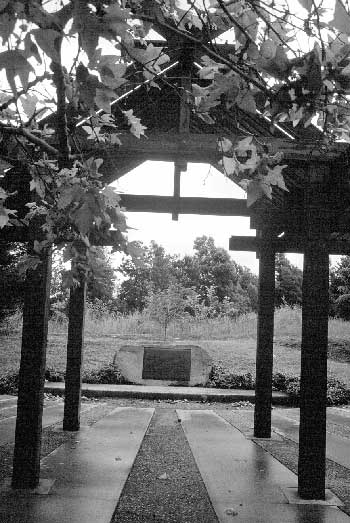
Figure 1.8. Historical marker and ramada at the site
of the Sacramento
Assembly Center.
 Figure 1.9. Reconstructed barracks on the grounds of the Fort Missoula History Museum. |
Two of the Department of Justice internment camps, Crystal City and Fort Missoula, have commemorative markers on site. At Fort Missoula one of the original internment barracks has been returned to the site and will be used to house interpretive displays about the internment (Figure 1.9). The internment camp at Kenedy is mentioned on a historical marker located in downtown Kenedy. In addition tothese three sites, efforts are presently underway to place a marker at the Santa Fe Internment Camp. None of the U.S. Army facilities that held Japanese Americans have plaques.
Of the three Federal prisons that held Japanese American during World War II, two are still being used as prisons. The third is located on U.S. Forest Service land (Catalina Federal Honor Camp) and was abandoned in the 1970s. The site is now a Forest Service Campground named in honor of Dr. Gordon Hirabayashi, one of the most famous figures associated with the prison and the Japanese American relocation. Future plans for the campground include interpretative signs or brochures about the Japanese American relocation experience, as well as that of Hopi Indians, Jehovah's Witnesses, and others who were sent to the prison for their beliefs.
Remnants of Architecture and Archeology
Beyond the monuments, many of the facilities associated with the relocation are intact, from an archeological standpoint. That is, although most buildings have been removed or destroyed, there remains a wide range of artifacts and features which evoke the distinct aspects of confinement and ethnicity. Other remaining features, such as hospitals, schools, and sewage treatment plants, reflect the requirements of a large concentration of people in previously sparsely populated areas (Figure 1.10).
The most abundant archeological remains were noted at the relocation centers and other sites used by the WRA. Continued use of many of the other facilities has erased most evidence of their former use. The best examples of these are those that were abandoned soon after World War II. These include the Department of Justice camps at Crystal City and Fort Missoula, and the U.S. Army internment camp at Lordsburg (Figure 1.11).
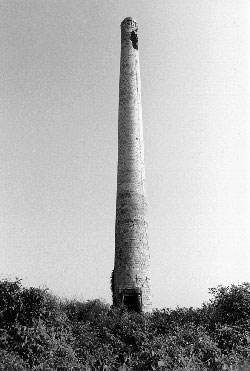 Figure 1.10. Hospital smokestack at the Jerome Relocation Center. |
 Figure 1.11. Remains at the site of the Lordsburg Internment Center. |
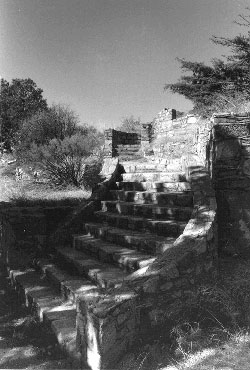 Figure 1.12. Rock and concrete steps in the staff housing area at the Catalina Federal Housing Camp. |
Of the assembly centers the most significant archeological remains discovered were those of an eroding dump at Marysville. Of the three Federal prisons, two are still in use and retain much of their original character. Numerous foundations and other features remain at the abandoned Catalina Federal Honor Camp (Figure 1.12).
Remnants of watchtowers and fences are visible at several of the relocation center sites. At Manzanar five of eight watchtower foundations are still in place, and recent archaeological work (Burton n.d.) has revealed evidence of the remaining three. All the watchtower foundations at Granada and Topaz are still visible in their original locations (Figure 1.13); at Tule Lake some are in place and some have been pulled out of the ground and left nearby. At Jerome, watchtower foundation remnants can be seen discarded in a ditch.
At the other camps, watchtower foundations have been removed or possibly buried by sediments. At one of the former Department of Justice facilities (Fort Missoula) portions of two guard towers have been preserved and are on display.
Stone sentry posts are still standing at the entrances to Manzanar and Minidoka (Figure 1.14); the less-substantial sentry posts at the other camps have not survived. Perimeter fences at Manzanar and Granada are still mostly intact, with many of the original fence posts of the 5-foot high, five-strand barbed wire fences still in place. At Manzanar, the top and bottom strands of barbed wire have been removed for its current role as a range fence. Heart Mountain, Minidoka, Rohwer, and Topaz retain some sections of perimeter fence; of these Heart Mountain's is the most substantial, with an added top section. Portions of the 6-foot-high chain link and barbed wire fence that was constructed when the Tule Lake Relocation Center was converted to a Segregation Center are still intact. None of the other sites investigated had evidence of their former security fences.
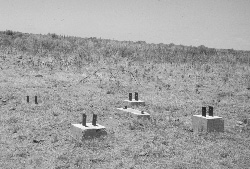 Figure 1.13. Watch tower founation blocks at the Granada Relocation Center. |
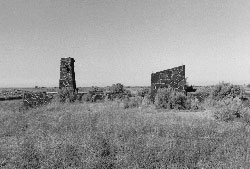 Figure 1.14. Sentry post and waiting room a the entrance to the Minidoka Relocation Center. |
The effectiveness of the perimeter fences at the relocation centers can be seen in the artifact distribution: all trash at most of the relocation centers was disposed of in centralized trash dumps. The only exception was the unfenced Gila River Relocation Center in Arizona, where small trash scatters outside the central area of the relocation center are as abundant as at any contemporary town.
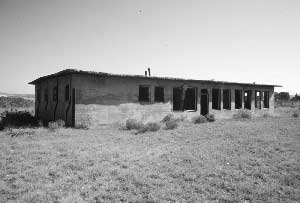 Figure 1.15. Jail at the Tule Lake Relocation Center. |
One of the most conspicuous symbols of the internment still remaining is the jail constructed for the Tule Lake Segregation Center (Figure 1.15). Of durable concrete, the jail stands abandoned within a highway maintenance yard, a visible reminder of the heightened security at Tule Lake. Tule Lake also has evidence of the largest and most substantial military police compound, with many of its buildings still standing. Six other relocation centers have foundations and other features remaining from their associated military police compounds, with the Gila River and Granada relocation centers retaining the most features and suffering the least disturbance.
Confinement was not, however, absolute. Evacuees at most of the relocation centers were allowed to leave the fenced areas to work in the center farms, to collect landscaping materials, or even to recreate. Evidence of some of these outlying facilities remains. For example, some of the relocation center farm buildings at Topaz and Granada are still standing; features remain at a CCC camp used by evacuees at the Topaz relocation center (Antelope Springs); and some picnic features are located outside the fenced central area at Manzanar. Evacuees at Tule Lake (probably before it was converted to a segregation center) visited a nearby prehistoric rock art site at Lava Beds National Monument, and chiseled their names into the cliff faces and neighboring boulders.
 Figure 1.16. Cemetery monument at the Manzanar Relocation Center. |
The WRA and even some within the Japanese American community hoped the evacuation, removal, detention, and eventual relocation would further acculturation with white America (e.g. Masaoka 1944). However, confinement may have had the opposite effect. Although the Japanese language was banned or proscribed in the centers, Japanese writing can be seen both in concrete features in outlying areas and in more public areas. At Manzanar, Japanese writing in concrete is most common outside the fenced central area. Possibly it was harder to circumvent the ban on Japanese writing under the closer scrutiny of camp confines. The ban did not apply to the dead: memorials at the cemeteries at Manzanar, Rowher, and Granada contain Japanese writing, as did headstones at Tule Lake and Heart Mountain (Figure 1.16).
Even though the Japanese Americans were imprisoned because of their ethnic background, they did not hide their Japanese heritage: ceramics include numerous rice bowls, tea cups, and other "Made In Japan" objects in the trash dumps at most of the facilities where such deposits were found. At Manzanar, fragments of saki bottles and "Go" gaming pieces were found during archaeological testing, and faint traces of Japanese baths were noted at a few latrine slabs (Burton 1993).
Evacuee-constructed features, such as landscaping, gardens, ponds, and irrigation systems, also reflect the Japanese heritage (Figure 1.17). Remnants of these features are most evident at the Manzanar and Gila River relocations centers, but historical photographs indicate they were common at the other relocation centers as well. The Judo house at Manzanar and the Sumo wrestling arena at Gila River also indicate the maintenance of traditional Japanese culture. As mentioned above, at Granada, Heart Mountain, Manzanar, Rohwer, and Tule Lake, the cemetery monuments and grave stones have prominent Japanese inscriptions. Even the evacuee-constructed sentry buildings at Manzanar and Minidoka show a distinct Japanese influence. However, evacuees also constructed facilities that could be considered typically "American:" at Gila River, Manzanar, and Topaz there is still evidence of the baseball fields that played an important role in evacuee life.
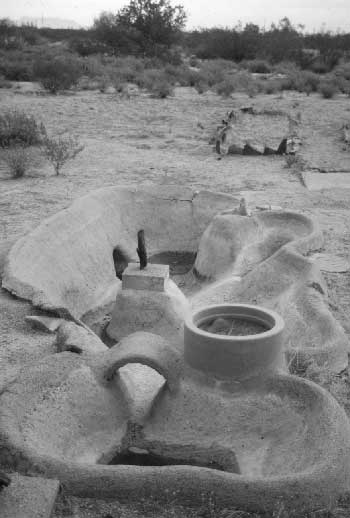
Figure 1.17. Small concrete pond at the Gila River Relocation Center.
Interestingly, there are fewer archaeological correlates of ethnicity at the Tule Lake Segregation Center, the isolation centers, and internment camps where the supposedly "more Japanese" Japanese Americans were held. This probably reflects the tighter security and control at these camps: perceived troublemakers were not allowed to bring their dishes or other comforts of home and were not likely to be allowed outside the camps to collect landscaping materials.
Comparing the remaining features of the relocation centers raises questions. For example, why do landscaping features such as ponds and walkways seem more substantial at Gila River and Manzanar than the other relocation centers? Did the evacuees who built ponds at these centers feel a relatively greater sense of permanence that encouraged their efforts to beautify their bleak surroundings with landscaping? Was Japanese landscaping a symbolic form of resistence?
Even between Manzanar and Gila River there are suggestive differences in landscaping. At Manzanar, there are large gardens associated with most of the communal mess halls. At Gila River, most ponds and landscaping appears to be associated with single barracks, rather than whole blocks. Do the large gardens at Manzanar reflect an usually high degree of cohesiveness? Many of the evacuees at Manzanar came from geographically restricted areas such as Terminal Island or other Los Angeles neighborhoods, where they had been neighbors before the relocation.
Many of the relocation centers have substantial archaeological remains and the potential for buried features. Overall, the physical remains at all the sites are evocative of this very significant, if shameful, episode in U.S. history. Each appears to have intrinsic historic value, meriting National Register or National Landmark status.
Report Structure
In this report Chapter 2 is a first-hand contemporary report of one relocation center by an outside observer: Eleanor Roosevelt visited the Gila Relocation Center in 1943 to investigate charges that the evacuees were being "coddled." Roosevelt, whether by design or chance, did happen to visit the relocation center with slightly more substantial construction than most, but could not find any evidence of coddling. Chapter 3 is a brief overview of the history of the relocation and internment. Chapters 4 through 13 summarize the individual history at each relocation center, the physical layout, and the current condition and access. Chapter 14 discusses the Moab and Leupp Isolation Centers; Chapter 15 describes other temporary facilities operated by the War Relocation Authority. Chapter 16 describes the assembly centers. Chapter 17 describes Department of Justice and U.S. Army internment camps where non-citizen Japanese Americans were held. Chapter 18 discusses three Federal prisons where a few hundred Japanese American citizens were incarcerated for protesting the relocation.
Terminology
The War Relocation Authority used euphemisms such as "relocation center" and "evacuees." The relocation centers certainly fit the dictionary definition of a concentration camp and use of that term for the relocation centers has many historical precedents (Uyeda 1995:57). However, the term "concentration camp" has since become almost synonymous with Nazi death camps. Even the use of the relatively benign term "internees" in reference to Japanese Americans has resulted in controversy (e.g., Baker 1994:23-24). When discussing the relocation centers this report to a great extent uses the terminology originally coined by the War Relocation Authority. In this we follow the use of the terms used by the National Park Service in its interpretation at Manzanar National Historic Site (Manzanar Committee 1998:iii-iv). The terms are not presumed to be an accurate definition of the events, attitudes, or facts of the relocation. They are used because they are most common in the historical records and may reflect the contemporary subjective context.

| <<< Previous | <<< Contents>>> | Next >>> |
wacc/74/chap1.htm
Last Updated: 20-Feb-2004